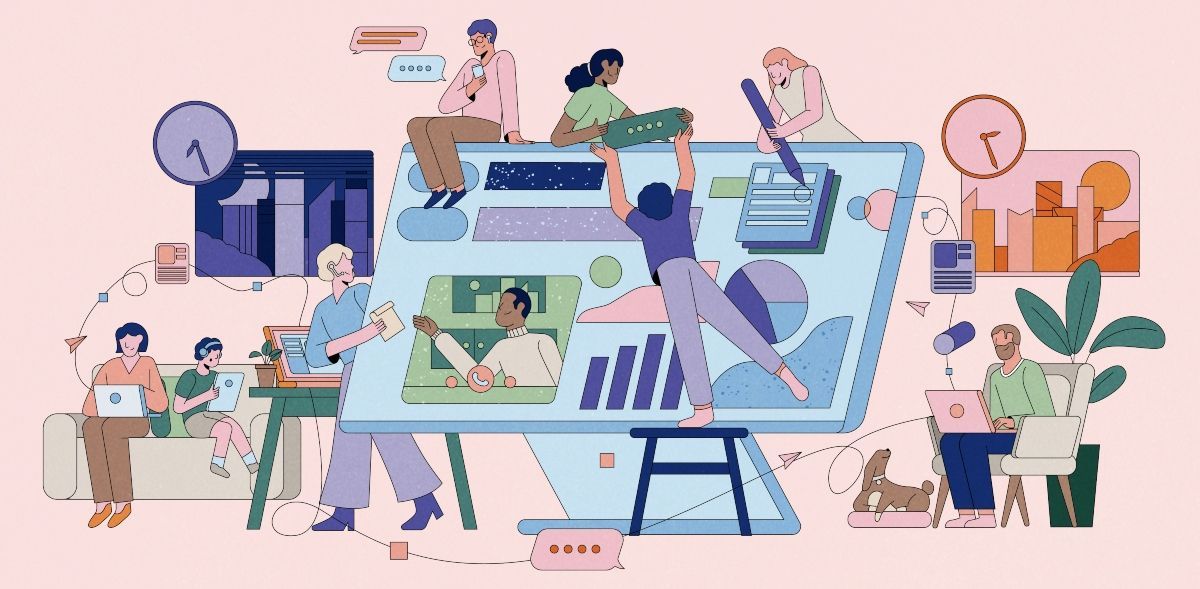
The Challenge of Interdisciplinary Collaboration
Siloed Knowledge and Communication Gaps

In the realm of cross-discipline research, one of the most significant hurdles is the existence of siloed knowledge and communication gaps. As researchers, we often find ourselves struggling to understand the specialized terminology used in fields outside our own. It's like trying to decipher a foreign language without a translation guide. This lack of shared vocabulary can lead to misunderstandings and missed opportunities for collaboration.
Moreover, the absence of shared frameworks for integrating diverse perspectives poses another challenge. Each discipline has its own methodologies, theories, and ways of thinking. When we try to bring these different approaches together, it can feel like trying to fit square pegs into round holes. This disconnect can stifle innovation and limit the potential for groundbreaking interdisciplinary discoveries.
Limited Access to Cross-Domain Resources
Another major obstacle in multi-discipline research is the limited access to cross-domain resources. As a researcher, I've often found myself struggling to find relevant research from other disciplines. It's like searching for a needle in a haystack, but the haystack is spread across multiple fields of study. Traditional search methods and databases are often tailored to specific disciplines, making it challenging to uncover valuable insights from other areas.
Furthermore, even when we do manage to find relevant cross-disciplinary research, synthesizing this information efficiently can be a daunting task. The sheer volume of data, combined with the differences in terminology and methodologies, can make it feel like we're trying to piece together a puzzle with pieces from different sets. This inefficiency can slow down the research process and limit the depth of interdisciplinary insights we can generate.
AI-Powered Literature Review and Synthesis
Automated Cross-Discipline Paper Discovery
Artificial Intelligence is revolutionizing the way we approach cross-discipline research, particularly in the realm of paper discovery. AI algorithms are now capable of identifying relevant research across domains with unprecedented accuracy and speed. These tools use advanced natural language processing and machine learning techniques to understand the context and content of papers, regardless of their field of origin.
By leveraging these AI-powered discovery tools, researchers can uncover connections between seemingly unrelated fields that might have been overlooked using traditional methods. For instance, ResearchFlow's AI can analyze millions of papers across various disciplines, identifying common themes, methodologies, or findings that bridge different research areas. This automated approach not only saves time but also opens up new avenues for interdisciplinary collaboration and innovation.
Intelligent Summarization of Multi-Discipline Findings
Once relevant cross-disciplinary papers are identified, the next challenge is to efficiently extract and synthesize key insights from these diverse sources. This is where AI-driven summarization tools come into play. These advanced systems can analyze complex academic papers and distill them into concise, actionable summaries, highlighting the most relevant information for your specific research focus.
Tools like ResearchFlow take this a step further by creating comprehensive literature reviews that span multiple disciplines. The AI doesn't just summarize individual papers; it identifies overarching themes, contradictions, and complementary findings across different fields. This intelligent synthesis can provide researchers with a bird's-eye view of the interdisciplinary landscape, making it easier to identify gaps in current knowledge and potential areas for groundbreaking cross-discipline research.
Visual Knowledge Mapping for Interdisciplinary Insights
Interactive Mind Mapping Across Domains
Visual knowledge mapping is a game-changer when it comes to fostering interdisciplinary insights. The benefits of spatial thinking in cross-discipline research cannot be overstated. By representing complex ideas and relationships visually, we can more easily identify patterns, connections, and gaps across different fields of study. It's like having a bird's-eye view of the entire research landscape, allowing us to see how different pieces of the puzzle fit together.
ResearchFlow's AI takes this concept to the next level by automatically creating dynamic knowledge maps from multiple papers. Imagine uploading a stack of research papers from various disciplines and watching as an AI system transforms them into an interactive, visual representation of key concepts and their relationships. This approach not only makes it easier to grasp complex interdisciplinary concepts but also stimulates creative thinking and helps researchers identify novel connections that might not be apparent in traditional linear formats.
Collaborative Visual Synthesis Platforms

Collaboration is at the heart of successful cross-discipline research, and visual synthesis platforms are making this process more efficient and effective than ever before. These tools allow researchers from different backgrounds to collectively build interdisciplinary frameworks, combining their expertise in a visual, intuitive format. It's like having a digital whiteboard where experts from various fields can brainstorm and connect ideas in real-time, regardless of their physical location.
Features enabling real-time collaboration on visual knowledge structures are particularly powerful. With platforms like ResearchFlow, multiple researchers can simultaneously work on the same knowledge map, adding insights, suggesting connections, and discussing implications across disciplines. This collaborative approach not only speeds up the research process but also leads to more robust, well-rounded interdisciplinary frameworks that benefit from diverse perspectives and expertise.
Natural Language Processing for Cross-Domain Communication
AI-assisted translation of Discipline-Specific Jargon
One of the most significant barriers in cross-discipline research is the specialized terminology used in different fields. It's like each discipline speaks its own language, making it challenging for researchers to communicate effectively across domains. This is where Natural Language Processing (NLP) comes to the rescue. AI-powered NLP tools can act as translators, bridging the terminology gaps between fields.
These advanced systems can analyze discipline-specific jargon and provide clear, accessible explanations or equivalents in other fields. For instance, when I'm working with ResearchFlow, I can hover over a specialized term from a biology paper, and the AI will provide me with an explanation that makes sense from my computer science perspective. This AI-assisted translation not only facilitates better understanding but also enables researchers to create shared vocabularies for interdisciplinary projects, fostering clearer communication and more effective collaboration.
Semantic Analysis for Identifying Cross-Discipline Connections
Beyond just translating terms, AI-powered semantic analysis is revolutionizing how we uncover hidden links between research areas. These sophisticated tools can analyze vast amounts of text across multiple disciplines, identifying conceptual similarities, methodological parallels, or complementary findings that might not be apparent at first glance. It's like having a super-intelligent research assistant that can spot connections we might miss due to our own disciplinary biases or limitations.
ResearchFlow's approach to suggesting unexpected interdisciplinary collaborations is particularly innovative. By analyzing your research interests and comparing them with trends and findings across various fields, the AI can recommend potential collaboration opportunities you might never have considered. This could lead to groundbreaking research partnerships that push the boundaries of traditional disciplinary lines, fostering true innovation through cross-pollination of ideas.
Integrated Platforms for Seamless Cross-Discipline Workflow
All-in-one Research Environments
The complexity of cross-discipline research often requires juggling multiple tools and platforms, which can be time-consuming and disruptive to the research process. This is where all-in-one research environments shine. These unified platforms integrate various aspects of the research workflow - from literature review and analysis to collaboration and writing - into a single, seamless interface.
The benefits of such integrated platforms for cross-discipline research are numerous:
Reduced context switching, allowing researchers to maintain focus
Improved organization of diverse research materials
Enhanced collaboration through shared workspaces
Streamlined data management across multiple disciplines
ResearchFlow exemplifies this approach by combining multiple tools to streamline cross-discipline research. With features like AI-powered literature review, interactive knowledge mapping, and collaborative workspaces all in one place, researchers can move effortlessly between different aspects of their interdisciplinary projects, maintaining momentum and fostering deeper insights.
AI-Driven Research Assistance and Recommendations
In the vast sea of interdisciplinary knowledge, finding relevant resources and making meaningful connections can be overwhelming. This is where AI-driven research assistance and recommendations come into play. These intelligent systems analyze your research interests, reading history, and current project focus to provide personalized suggestions for relevant cross-discipline resources.
ResearchFlow's AI-powered features take this concept further, enhancing interdisciplinary discovery in several ways:
Suggesting papers from adjacent fields that might offer new perspectives
Identifying emerging trends at the intersection of multiple disciplines
Recommending potential collaborators based on complementary expertise
By leveraging these AI-driven recommendations, researchers can expand their interdisciplinary horizons, discover unexpected connections, and stay at the forefront of cross-discipline innovation.
To illustrate the impact of these integrated platforms, let's look at a comparison of traditional research methods versus AI-powered integrated platforms:
Aspect | Traditional Methods | AI-Powered Integrated Platforms |
|---|---|---|
Literature Review | Manual search across multiple databases | Automated cross-discipline paper discovery |
Knowledge Synthesis | Linear note-taking and summarization | Interactive visual knowledge mapping |
Collaboration | Email exchanges and periodic meetings | Real-time collaborative workspaces |
Interdisciplinary Connections | Reliant on personal network and serendipity | AI-driven recommendations for unexpected collaborations |
